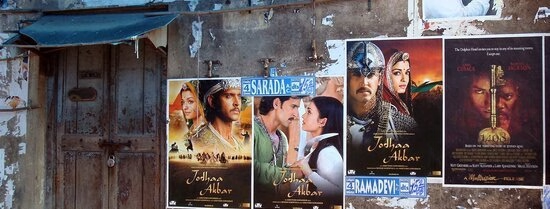Bollywood is huge in India, but its sphere of influence extends far beyond. That's what Apoorva Nanjangud's (Erasmus School of History Culture & Communication) dissertation shows. She studied tourism with Bollywood films as a driving force. The researcher spoke with many respondents from India or with Indian roots, including Dutch Hindustani.
When Apoorva Nanjangud arrived from India in Rotterdam she immediately started exploring her new neighborhood. On her second day, she found a local, ethnic supermarket, that to her surprise offered lots of Indian products. But it was the music that especially struck her, as they were playing a remixed version of one of her favorite Bollywood songs. “It was very strange because the Hindi lyrics were mixed with Caribbean beats. I asked the cashier and she told me her great-grandfather was from India. It opened up a big can of questions for me, as she told me about the Hindustani community. I rushed back to my apartment to find out everything I could about them.”
She told her supervisor that she wanted to study this group and that is how the Dutch Hindustani community became a starting point of her PhD research on Bollywood tourism. She became fascinated by this group, that is incidentally also the largest Indian diaspora in Europe formed under the post-colonial context. The Hindustani community, ended up in the erstwhile Dutch colony of Suriname, and many of them came to the Netherlands after Suriname’s independence in 1975.
Bollywood as a guidebook
An important focus of her study is how Bollywood strengthens the ties with India for the diaspora (people with roots in India who live abroad). “The Hindustani have been living outside of India for several generations but they still feel a strong connection. Parents use Bollywood movies as a sort of guidebook to have their children learn about India, so Bollywood is really a bridge. At the same time, the connection with Suriname diminishes and that has to do also with the magnitude of Bollywood on the global media landscape. This provides them with a relevant tool that they can identify with.”
The daughter of the cashier connected the researcher to the first few members of the community and thereafter, many respondents for Nanjangud’s study. “They all want to talk about Bollywood because it’s so important to them. Hindi cinema gives them comfort and a sense of identification. Some respondents shared that they tried Hip-hop, but they could relate more to the Bollywood narrative as it gave them something of their own. I was so moved by how rich their stories are. A participant told me that when the plane landed he get goosebumps all over and started crying. When they come to India for the first time they feel like they are arriving home, even if they have no direct family there.”
This is a form of transnationalism as many want to be more associated with their source culture. She talked to many people who traveled to India with Bollywood as an important driving force. She even received pictures of participants who were reenacting scenes from popular movies. “Instead of museums, they want to visit all the Bollywood locations like movie sets or houses of celebrities. They make it part of their itinerary, which allows them to look at a place through the narrative of film. They learn about traditions and local celebrations through film and it makes them proud of their roots.”
Enter the screen
It is important to understand the significance of Bollywood cinema in everyday life in India. According to the researcher, cinema is one of the main forms of leisure and spending free time. Movies often have a musical feel as they have intermezzos with music and dance. These songs often become very popular, also on their own. By learning a dance viewers can reenact a scene, which is more complicated with other movie genres. “They connect with celebrities on a very emotional level and there is a highly engaged fanbase. Dressing up and imitating scenes allows them to enter the screen and escape their everyday life, which can be full of hardship, and be someone else for a moment”, explains Nanjangud.
Bollywood on tour
More and more Bollywood movies are partly set abroad, often in Europe or the US. This causes a new form of tourism where Indians travel to locations where certain scenes were shot. In Dubai (United Arab Emirates) the world's first Bollywood theme park was opened which attracts mainly travelers from India. Nanjangud found that respondents ‘swelled with pride’ to find this part of their cultural legacy abroad. In 2015 a very romantic music scene was shot at a remote plane crash site in Iceland and the researcher spoke to about ten people who actually went there. “This video clip had a huge impact and turned Iceland into a romantic destination. More and more people came and a direct flight was launched between India and Reykjavik.”
Nanjangud herself is also a big fan of Bollywood cinema. “I really relate to it. At the moment I also feel part of the diaspora and I use movies to maintain my connection to India”, she explains. Her research also showed that most people who are part of the diaspora prefer that movies are shot in India, and not abroad. “They want to see more of India, not the western world. Movies allow them to suspend the everyday difference that they probably feel in Europe. One respondent even said it hampers the connection. For filmmakers, this causes a bit of a dilemma as Indians living in India, do like to learn more about Western countries.”
- More information
PhD-defense
On 28 April 2022, A.S. Nanjangud will defend her PhD dissertation, entitled: ‘Finding Bollywood. A Comparative Analysis of Bollywood Tourism in a Transnational Context’.

